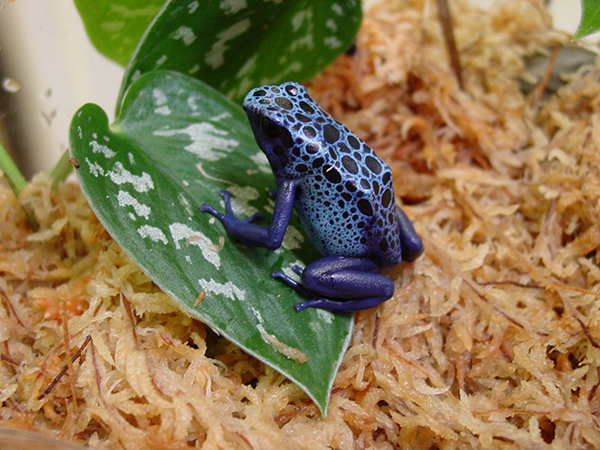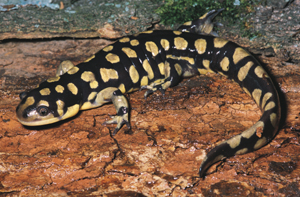Amphibians
Frogs | Salamanders | Tortoises
Amphibians are cold-blooded vertebrates with skin that lacks hair, feathers, or scales, and they breathe through both skin and lungs. The word "amphibian" comes from the Greek words "amphi" and "bios", meaning "double life" because amphibians can live on land as well as water. Most have a larval aquatic form and an adult terrestrial form. In general, amphibians need to be near water when they breed in order to lay eggs in or over water where the tadpoles can then hatch.
Amphibians can be divided into 3 groups:
- Frogs and Toads (Anura)
- Newts, Salamanders, and Sirens (Urodela)
- Caecilians (Gymnophiona)
We currently have frogs in the BGSU Herpetarium.
Explore More
 Frogs (Anura)
Frogs (Anura)
Frogs have a distinctive body type: a large head that merges with a fat body, a wide mouth, large eyes, no tail, and back legs longer than the front to aid in jumping. They have highly permeable skin that secretes mucus to keep it moist. Most species utilize external fertilization.
Tree Frogs
- White's Tree Frog
Dart Frogs
- Blue Poison Frog
- Yellow and Black Poison Frog
 Salamanders (Urodela)
Salamanders (Urodela)
Salamanders are tailed amphibians that have a narrow head with small eyes and a relatively small mouth. They have a body shape similar to lizards, but salamanders differentiate themselves with their permeable skin. All four legs of the salamander are approximately the same size, so they walk slowly to moderately fast.
While most salamanders can live on land, they reside in close proximity to water. Many salamanders are temperate or subtropical and require a moist habitat.
- Axolotl
- Tiger Salamander
The Herpetarium is a facility in the Department of Biological Sciences.
Bowling Green State University | Bowling Green, OH 43403-0001 | Contact BGSU Herpetarium | Campus Map
Updated: 08/28/2019 02:50PM

 Salamanders (Urodela)
Salamanders (Urodela)